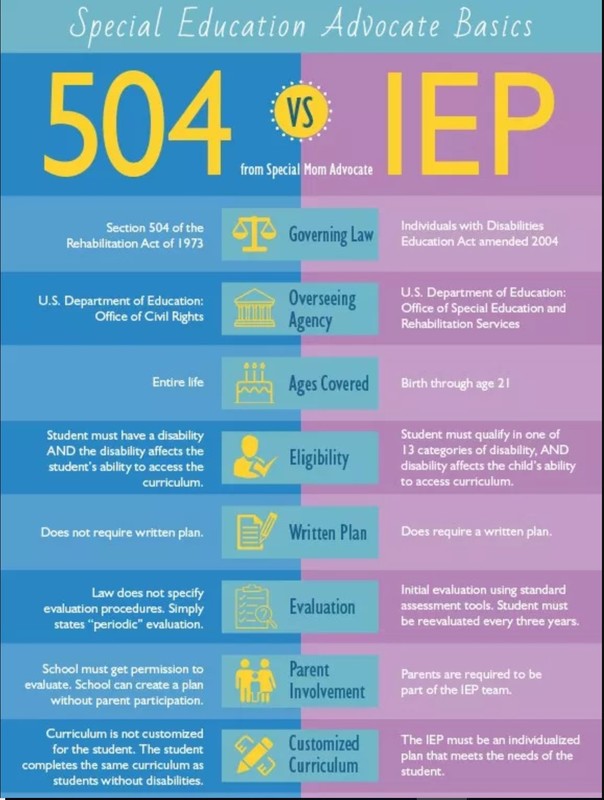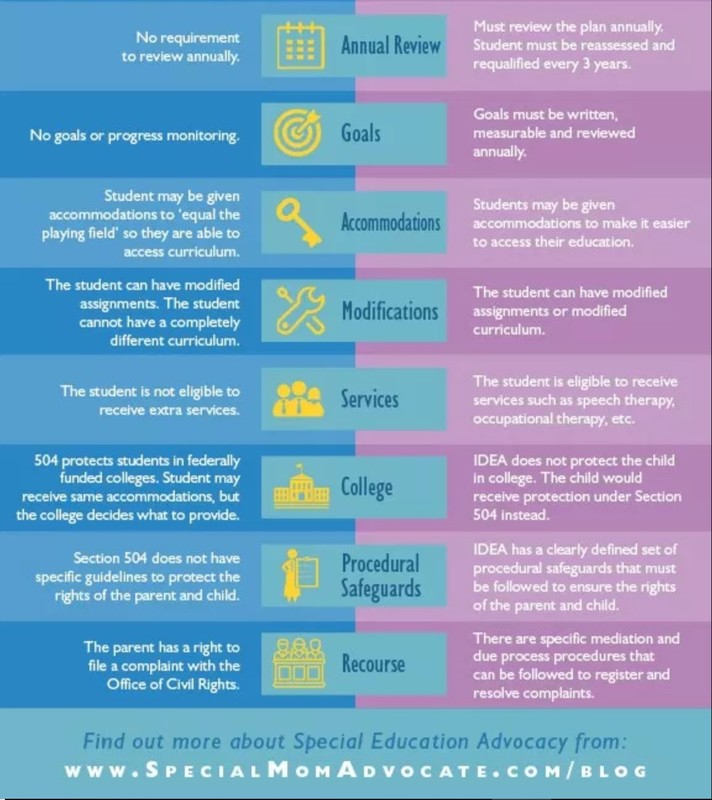SPECIAL EDUCATION
WASHINGTON TOWNSHIP OF SPECIAL EDUCATION COOPERATIVE
The Washington Township of Special Education Cooperative works to service the needs of special education teachers, students, and families of WCHS Dist. #308 and Washington District #50. We are greatly appreciative of their work in our schools and encourage you to access the resources provided by our School Psychologist and Social Worker on their monthly educational topics. For specific Coop information please visit their website WTSEC
ACCOMMODATIONS VS. MODIFICATIONS: WHAT’S THE DIFFERENCE?
Oftentimes, students with an Individualized Education Program (IEP) receive classroom and/or testing accommodations or modifications. We hear these terms used interchangeably; however, they have very different meanings and serve two distinct purposes. An IEP team carefully chooses accommodations and modifications that are unique to each student.
ACCOMMODATIONS
Accommodations alter how a student learns. They are adjustments or changes to the environment, curriculum format, instruction, or equipment that allow a child with a disability to access academic content or complete assigned tasks in their regular course of study. They do not change what the student is expected to learn at their grade level. These changes take the form of physical or environmental changes such as timing, setting, formatting, response, or presentation. For example, a teacher may choose specific seating for a student that is easily overwhelmed or distracted by exterior stimuli such as noise; or a student could be given an audio reading when he/she has difficulty reading. *Formal or state testing situations can also include modifications, depending on the needs of the student. These are usually similar to classroom accommodations.
Examples of Accommodations: use of large print, worksheets, or Braille, fewer question items on each page, extra time, providing breaks during instruction, having sign language interpreters, using specialized keyboards, and more.
MODIFICATIONS
Modifications describe very fundamental changes in the curriculum. These modifications make a change in the curriculum or measurement of learning. These are put into place when a student with a disability is unable to comprehend all of the instructional content by a teacher. They may include changing the standard of expectations for a course or assessment when the student may be unable to learn all of the materials. Modifications for your child should be researched properly over a period of time because modifying the curriculum may put your child at a lower academic track due to the changes in the curriculum.
Examples of Modifications: shortening assignments, providing easier-to-read texts, reducing the number of assignments, alternate testing, and more.
It is important for parents, teachers, and administrators to be aware of the differences between accommodations and modifications when creating programs for students. With the appropriate accommodations and modifications in place, IEP teams are better set up for success.


